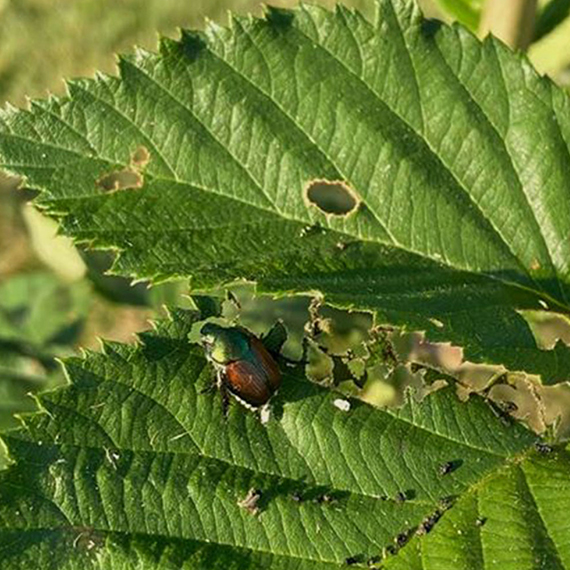Don't let insects get the best of your yard!
While some insects are beneficial for plants and the environment, many others can wreak havoc on lawns and landscape plants causing serious damage to both your property and your budget. There are many different signs that insects have invaded your lawn and/or landscaping, but it's not always easy to discern what specific pest is to blame. This is where an experienced licensed professional can help! CCE regularly treats a variety of common invaders to our area, including Emerald Ash Borer, Japanese Beetles, and Bagworms. We also treat shrubs and trees to prevent a variety of insects and diseases. We can help decipher which insect is causing the damage and develop the best strategy to combat it.

Common backyard invaders in the Midwest
Japanese Beetles - Japanese beetles are an invasive insect found in both rural and urban areas throughout Indiana and the Midwest. They feed on over 400 different species of plants and are most damaging to lawns, trees, flowers, fruits, and gardens in the modern landscape. Visit our blog post on Japanese beetles to learn more on how to identify an infestation and how to treat for these pesky insects.
Read Our Japanese Beetles Blog
Bagworms- Bagworms are a type of caterpillar that turn into moths after the chrysalis stage. While they invade over 120 different varieties of trees, they are commonly found on evergreen trees. Bagworms eat away at the buds and foliage of evergreens, causing branch tips to turn brown and die. Although you may not notice the actual bagworms themselves, you can easily recognize them by their camouflaged cocoons. These cocoons can hold up to 1,000 eggs!
Read Our Bagworm BlogEmerald Ash Borer – Emerald Ash Borer is a destructive, wood boring beetle that has been detected in 32 states across the country and 92 counties in Indiana. Left untreated, your ash tree will not survive these nasty invaders. Signs that your ash tree may have ash borer include: leaf die back in the upper third of the tree, vertical splits in the bark, S-shaped channels filled with a sawdust like material, D-shaped exit holes, heavy woodpecker activity, and epicormic shoots at the bottom of the trunk.
Purdue University Extension and Department and Entomology is an excellent resource for additional information on Emerald Ash Borer: Purdue University-Emerald Ash Borer in Indiana
